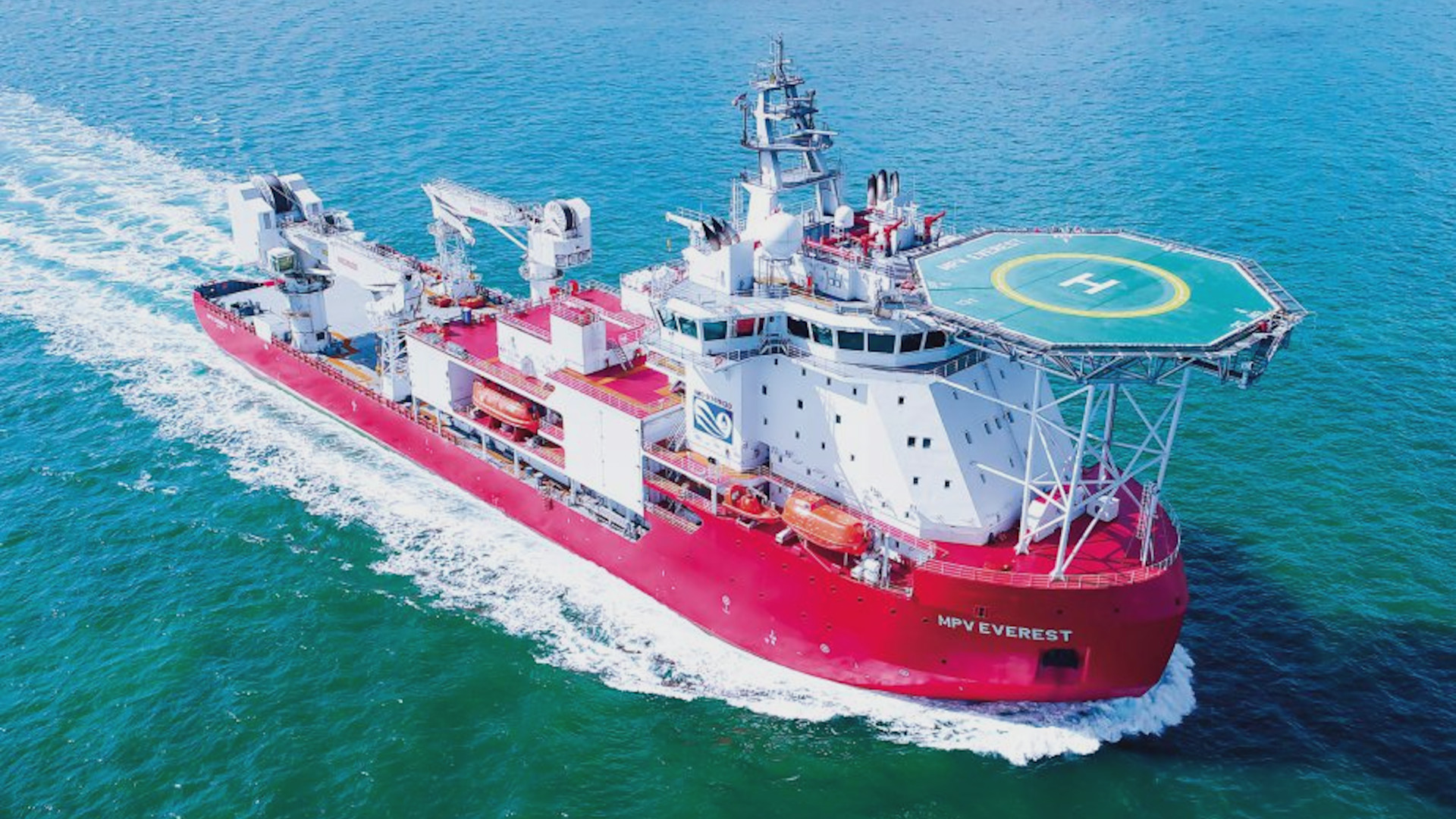The U.S. Navy says it has recovered an F/A-18E Super Hornet fighter jet that was blown off the deck of the supercarrier USS Harry S. Truman as it sailed in the Mediterranean Sea last month. The service says the jet was recovered after being located on the seabed at a depth of around 9,500 feet. It will now be taken to an unspecified military facility in the region before being transported back to the United States.
A salvage team made up of U.S. personnel from U.S. Naval Forces Europe and Africa, U.S. Six Fleet’s Task Force 68, Naval Sea Systems Command’s Supervisor of Salvage and Diving (SUPSALV), the Truman, Naval Strike Fighter Wing Atlantic, as well as contractors, recovered the Super Hornet on August 3 while embarked on the Multi-Purpose Vessel (MPV) Everest, according to a Navy press release. Marine services company Maritime Construction Services, which has its main headquarters in Luxembourg, operates Everest.

The Super Hornet in question, which was from one of the squadrons currently assigned to Carrier Air Wing (CVW 1), fell off Truman‘s deck on July 8, according to an initial Navy statement on the incident. At that time, the service said that “unexpected heavy weather” was the immediate cause, but that a full investigation into the circumstances behind the loss of the aircraft had been launched.
One sailor suffered minor injuries, but was expected to make a full recovery, the Navy’s statement in July said. Truman had been in the process of replenishing at sea when the fighter blew away, which was immediately halted for safety reasons, but the service said that the carrier and CVW-1 remained “full mission capable.”
“The rapid response of the combined team, including SUPSALV and Phoenix International personnel, allowed us to conduct safe recovery operations within 27 days of the incident,” Lt. Miguel Lewis, a U.S. Sixth Fleet salvage officer, said in a statement. “Our task-tailored team operated safely and efficiently to meet the timeline. The search and recovery took less than 24 hours, a true testament to the team’s dedication and capability.”
A Cable-controlled Undersea Recovery Vehicle 21 (CURV-21), a 6,400-pound tethered remotely operated vehicle (ROV), was used to help locate the lost F/A-18E and attach a specialized recovery rig to it. After that, a recovery line from Everest was hooked to the rigging and the fighter was hoisted onboard.

The Navy regularly employs CURV-21s to help recover sunken aircraft, including the record-setting retrieval of an MH-60S Seahawk helicopter from a depth of approximately 19,075 feet last year. That helicopter had gone down in the Pacific Ocean off the coast of the Japanese island of Okinawa in January 2020.
The CURV-21s can also be configured with sonars and cameras to help search for and otherwise investigate objects of interest on the seafloor.
After the Super Hornet blew off Truman’s deck in July, the Navy did not immediately say whether or not it would seek to retrieve the jet from the bottom of the Mediterranean.
When a British F-35B Joint Strike Fighter fell into the Mediterranean last year there was a rush to recover that aircraft. This was driven in large part by concerns that the Russian government could utilize its own specialized undersea salvage capabilities, which include a fleet of highly-specialized ships and submarines, might glean sensitive details about the stealthy jet by recovering all or part of it. Any such information, or even entire portions of the jet, could have then been passed on to other potential hostile actors, as well.
The F/A-18E is also filled with sensitive components, such as its AN/APG-79 active electronically-scanned radar, electronic warfare suite, identification friend-or-foe gear, and communications and data-sharing systems, as well as the software that runs them all. The Navy’s existing F/A-18E/F fleet has been in the process of receiving significant upgrades in recent years, too, as the service plans to continue operating these jets as core components of its carrier air wings for years to come. Any of this falling into the hands of a foreign and potentially hostile power, such as Russia, would present significant operational and technical security risks.
There is the possibility that the Super Hornet may have had live missiles or other munitions, or other stores, loaded onto the Super Hornet when it plunged into the Mediterranean, too. Truman and its associated carrier strike group, including CVW-1, had first arrived in the region for their current deployment as fears of an all-out Russian invasion of Ukraine were mounting. They have remained there ever since as part of efforts by the U.S. military and other NATO members to bolster the alliance’s force posture in light of Russia’s now months-long war in Ukraine. The USS George H.W. Bush and its strike group are expected to relieve Truman sometime this month.

If nothing else, “the recovery efforts demonstrate the U.S. Navy’s capabilities to conduct deep-water search and recovery operations world-wide,” the Navy’s statement today said.
No matter what, the Navy says that the sunken Super Hornet is now safely back in American hands and will soon be headed back to the United States.
Contact the author: joe@thedrive.com
